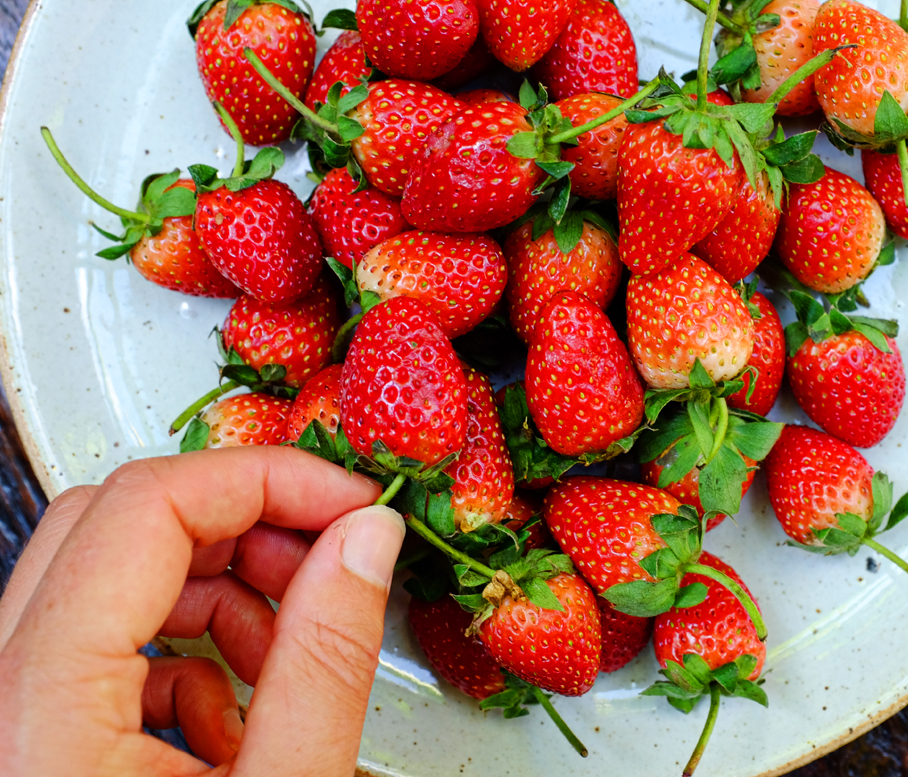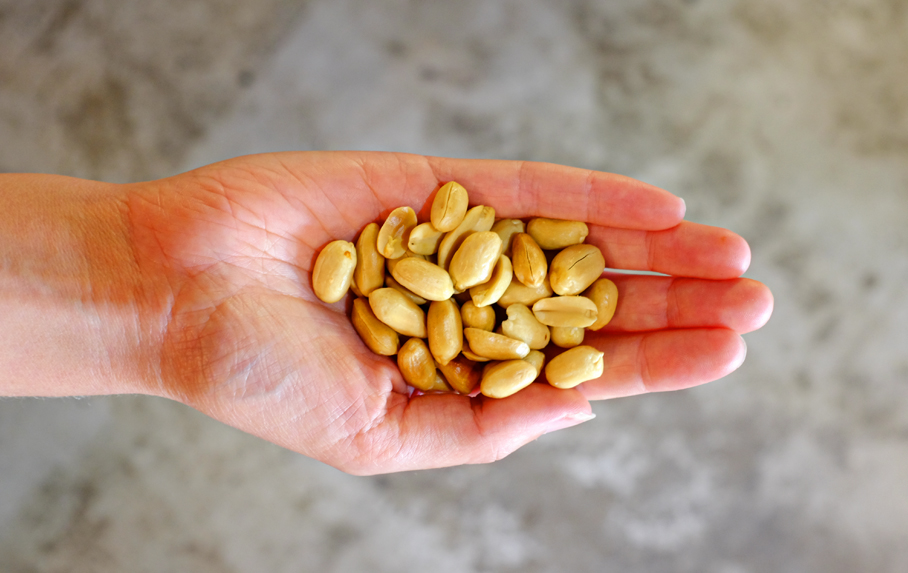I challenge the saying ‘schools of thought’ about nutrition. It’s a science, like any other, although a young one. Only a hundred years ago vitamins A, B, C, D and E were discovered, and it’s only fifty years since scientists found a correlation between low HDL levels and heart disease. Admittedly it’s not a perfect science by any means, but it’s growing day by day, and there’s still incredibly credible evidence to support making the right decisions for your health.
The problem is that even with the best-controlled trial it can sometimes be challenging to isolate nutrition from other factors that may be affecting your health, like stress, genetics and even the weather! Trends in data might not always equal cause and effect with so many of these different variables, making some of the outcomes decidedly…grey. It can be pretty frustrating, and sometimes stirs up a hotbed of controversy.
There are some foods however which we know have an overwhelming amount of evidence to support our health. In this way, we can benefit from the growing wealth of research undertaken by expert nutritional scientists, and listen to their collective voices. First, we look at research with the best and fairest study designs, those published in the top scientific journals, and finally the overarching weight of evidence – what are most of these quality-approved scientific papers saying? Nutrition directly affects our health, our everyday vitality and wellbeing, so I don’t know about you, I don’t want to be messing around with my food (unless it’s at a kid’s Halloween party). Science is cool people! Seriously.

Beans
Yep. Beans make you fart, and you know what? It’s good for ya! It’s suggested to be healthy and totally normal to toot up to 22 times a day. Funnily enough, this research was funded by NASA in the 1950s, worried that their astronauts might suffocate from too much fart gas or that a spark could ignite the methane!
The American Institute for Cancer Research published one of the most comprehensive analysis of diet and cancer ever, with nine research teams sifting through some half a million studies to create a landmark scientific consensus report. One of their summary recommendations for cancer protection was to eat whole grains and legumes with every meal. Not every week or every day. Every meal. So show them some love.
I seriously can’t get enough of beans. Your gut microbiome feeds on fibre andpolyphenols, a type of antioxidant that’s common in dark fruits and vegetables (and red wine too, woo yea). Beans are bursting full of fibre, oligosaccharides and resistant starch which your gut microbes nosh on, releasing a mixture of hydrogen and methane into your intestines that then gets tooted out of your rear. In the last ten years, we’ve started to learn vast amounts about the benefits of having a happy gut microbiome, from reducing inflammation to it’s possible effects on mood.
Whole Grains
Whole grains have been recommended for their multiple health benefits even dating back to Hippocrates, the Greek father of medicine. Sorry Paleos. The health benefits of whole grains have been extensively studied, and have been widely shown to reduce your overall risk of disease and death, in part thanks to their high content of bioactive compounds and high fibre content. Those who eat the most whole grains, about 70g per day, have the most significant health benefits, with the lowest risk of dying. For both beans and grains, more is better. If the lower rates of heart disease and risk of diabetes aren’t enough for you – eating grains makes you live for longer! Who needs that philosopher’s stone now? Give these whole grains a try!
| • Whole grain wheat | • Millet |
| • Quinoa | • Amaranth |
| • Teff | • Buckwheat |
| • Spelt | • Bulgur wheat |
| • Barley | • Sorghum |
“Beans and grains are the perfect dynamic health duo.
Together they not only contain all the nine essential
amino acids, the building blocks of protein, but are
rich in dietary fibre with a low energy density.”
Berries
Some of the highest fibre fruits (thank you little seeds), these nutrient-dense dudes offer some of the best bang for your buck with benefits for not only for keeping your heart healthy but also warding off cognitive decline and Parkinson’s. Many of the protective effects attributed to berries are due to their high content of flavonoids, which counteract oxidative stress, reducing inflammation and regulating the expression of disease-related genes. In repeated research, it’s the whole fruit that’s of benefit, rather than the fruit extract. The bioactive compounds in whole foods all work together in your body through complex interactions and phytochemical team work. Nature really does know best.
Nuts and nut butter
Up to 35% of our diet can be made up of healthy fats (hurrah avocado and nuts). Some people seem fearful of fat making you gain weight, but research has suggested that regularly eating nuts might actually help shed a few kilos, and at the very least keeps us weight stable. Why? Possibly due to two reasons. Nuts have a high satiety value, keeping us feeling full and so eating less at other times of the day. And also, we don’t seem to chew whole nuts particularly well! We end up losing between 5% to 15% of their energy that just passes out right through us into our poop. Nut-lovers who eat more than three servings of nuts per week reduce their risk of death from all causes, and especially so if you’re already eating lots of plant foods and whole grains already.
While peanuts (and therefore peanut butter) have the highest protein content of nuts, walnuts also contain omega-3, an anti-inflammatory fatty acid that is often lacking in western diets. It doesn’t pay to stress over exact portions, a loose handful of nuts can be a nutritious dose to your morning breakfast, or chucked on a salad. So go for it, spread that nut butter away.
Variety
When it comes to starting a new habit, begin with the easiest one for you. It might be having a jar of nuts in the car to snack on during your commute to work, or having frozen berries in your freezer ready to add to your brekkie-to-go. Try different varieties for multiple health benefits and flavour kicks. If you’re making a change to your routine, it’s nice to do it with some peace of mind, that you are as close to certain that you are reaping the benefits of improved health, the gifts that keep on giving.
Interested to know more? Emily is available for nutrition consultations through her website www.nutritionlarder.com, or like and follow her online Facebook community Nutrition Bite for legit and up-to-date nutrition videos.

REFERENCES
Food, Nutrition, Physical Activity, and the Prevention of Cancer: a Global Perspective
Levitt M. Intestinal Gas Production — Recent Advances in Flatology. New England Journal of Medicine. 1980;302(26):1474-1475.
Marchesi J, Adams D, Fava F. The gut microbiota and host health: a new clinical frontier. Gut. 2015;65(2):330-339.
Van den Elsen L, Poyntz H, Weyrich L. Embracing the gut microbiota: the new frontier for inflammatory and infectious diseases. Clinical & Translational Immunology. 2016;6(1):e125.
Benisi-Kohansal S, Saneei P, Salehi-Marzijarani M. Whole-Grain Intake and Mortality from All Causes, Cardiovascular Disease, and Cancer: A Systematic Review and Dose-Response Meta-Analysis of Prospective Cohort Studies. Advances in Nutrition: An International Review Journal. 2016;7(6):1052-1065.
Schwingshackl L, Schwedhelm C, Hoffmann G. Food groups and risk of all-cause mortality: a systematic review and meta-analysis of prospective studies. The American Journal of Clinical Nutrition. 2017;:ajcn153148.
McKeown N, Jacques P, Seal C. Whole Grains and Health: from Theory to Practice-Highlights of the Grains for Health Foundation’s Whole Grains Summit 2012. Journal of Nutrition. 2013;143(5):744S-758S.
O’Neil C, Nicklas T, Zanovec M, Cho S. Whole-Grain Consumption Is Associated with Diet Quality and Nutrient Intake in Adults: The National Health and Nutrition Examination Survey, 1999-2004. Journal of the American Dietetic Association. 2010;110(10):1461-1468.
Huang H, Chen G, Liao D, Zhu Y, Xue X. Effects of Berries Consumption on Cardiovascular Risk Factors: A Meta-analysis with Trial Sequential Analysis of Randomized Controlled Trials. Scientific Reports. 2016;6(1).
Menezes R, Rodriguez‐Mateos A, Kaltsatou A. Impact of Flavonols onCardiometabolic Biomarkers: A Meta‐Analysis of Randomized Controlled Human Trials to Explore the Role of Inter‐Individual Variability. Nutrients. 2017;9(2):117.
Krikorian R, Shidler M, Nash T. Blueberry Supplementation Improves Memory in Older Adults†. Journal of Agricultural and Food Chemistry. 2010;58(7):3996-4000.
Pribis P, Shukitt-Hale B. Cognition: the new frontier for nuts and berries. American Journal of Clinical Nutrition. 2014;100(Supplement_1):347S-352S.
Bes-Rastrollo M, Wedick N, Martinez-Gonzalez M. Prospective study of nut consumption, long-term weight change, and obesity risk in women. American Journal of Clinical Nutrition. 2009;89(6):1913-1919.
Flores-Mateo G, Rojas-Rueda D, Basora J, Ros E, Salas-Salvado J. Nut intake and adiposity: meta-analysis of clinical trials. American Journal of Clinical Nutrition. 2013;97(6):1346-1355.
Alper C, Mattes R. Effects of chronic peanut consumption on energy balance and hedonics. International Journal of Obesity. 2002;26(8):1129-1137.
Going Nuts — For Nut and Seed Butters, That Is






